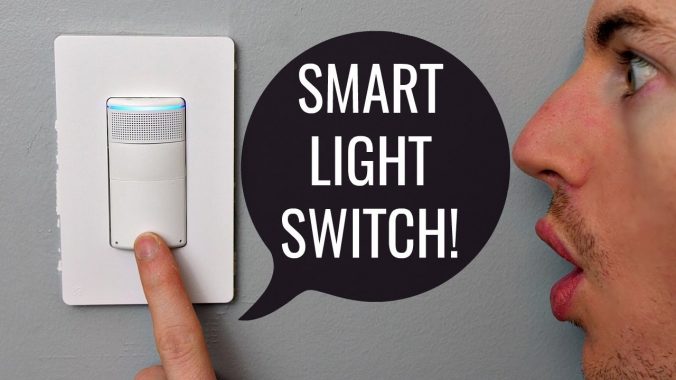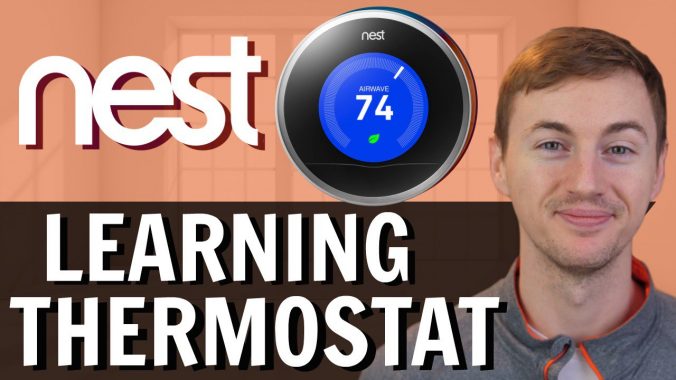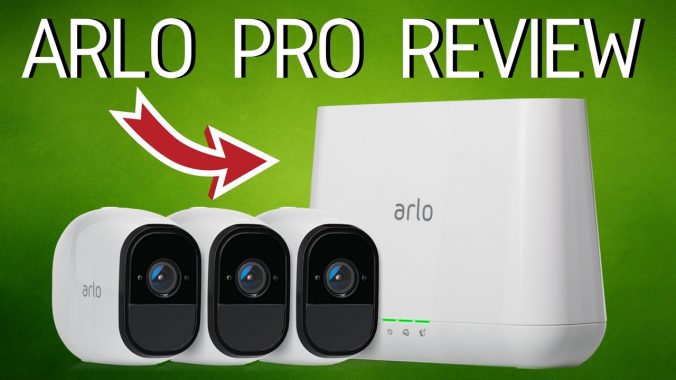Video Transcript:
I’ve recently begun to transform my house into a smart house, starting with my wireless security system all the way to my thermostat, and when I was researching the best smart thermostats I saw a particular brand called ecobee that was mentioned quite frequently. So when they reached out and asked if I wanted to do a sponsored video of their latest smart home product called the Switch+ I thought it looked like something you guys would be interested in so I agreed.
The ecobee Switch+ is a smart light switch with far-field voice technology and built-in Amazon Alexa which is the name of Amazon’s virtual assistant and it’s one of the main features of the ecobee Switch+. According to Amazon “The Alexa Voice Service is an intelligent voice recognition and natural language understanding service that allows you to voice-enable any connected device that has a microphone and speaker.” And that’s exactly what the ecobee switch+ is equipped with.
The Switch+ is like a smart personal assistant and simple light switch wrapped into one. With the built-in microphone and speaker for Amazon Alexa, the Switch+ enables invisible voice control in any room it’s installed in. It also provides smart light control by detecting occupancy and daylight. Also, a software update coming this summer will enable the Switch+ to function as a sensor to manage hot or cold spots in a room when the switch is paired with an ecobee thermostat. Like all ecobee products, the Switch+ integrates with Amazon Alexa, Apple HomeKit, Google Assistant, SmartThings, and IFTTT. The Switch+ is $99 in the U.S. and $119 in Canada and it’s available for pre-order starting March 13 and will start shipping on March 26. I’ll leave the link in the description below for you to check out.
First, let’s go over what’s in the box. Inside, you’ll find the main attraction itself the Switch+, along with a wall plate, 4 wire nuts, 2 mounting screws, and the setup guide. The install is fairly simple and only takes about 45 minutes. Even though you can follow the setup guide that comes in the box, it’s probably easier to download the free ecobee app because the app will actually walk you through the entire process and it has helpful videos along the way. The app will also tell you what tools you need and it will do a compatibility check to verify your light switch will work with the Switch+.
Once you’ve verified compatibility, you’ll need to turn off the breaker for the switch you’re installing. After confirming the power is off, remove the old switch from the wall and disconnect the wires. Next, identify and connect the necessary wires to the Switch+. This part took the longest for me so be patient. Once that is done, push the wires back into the wall and screw the Switch+ to the wall. Turn the breaker back on and test out the Switch+ by pressing the button to turn your light on and off. If it works, then the final step is to snap on the wall plate.
Next, you can use the ecobee app to finish setting up the Switch+ by creating your free ecobee account, giving your Switch+ a name & location, and connecting it to your WiFi network. Keep in mind that even though it has built-in WiFi, it does not have Bluetooth enabled at this time. Once it’s fully set up you can control your Switch+ from anywhere using the ecobee app as long as you’re connected to the internet.
On the app home screen you can quickly turn the light on or off using the main button or you can tap the middle icon at the bottom to bring up more controls. the Smart On feature will automatically turn on the lights when someone enters the room. If you enable daylight detection, Smart On will only activate when the room is dark. Smart Off will turn the lights off when no one is in the room, and you can set the off timer to different intervals based on your preference. Another awesome feature is the built-in night light which will automatically glow when the room is dark. And if you have your Switch+ set up as an outdoor light, you can set it to automatically turn on at sunset which is nice.
As I mentioned before, Amazon Alexa is a big part of the Switch+ because it allows you to perform voice commands like asking it to set a timer, read the news, give you the weather forecast, and more. This is all part of ecobee’s “Whole Home Voice” vision to deliver effortless hands-free voice control in every room without dealing with hubs or wires.
To start using Amazon Alexa, first link your Amazon account within the ecobee app. Then download the free Amazon Alexa app and sign in with your Amazon account. Next, add the ecobee skill and authorize Amazon Alexa with your Switch+. Then you can ask Alexa to discover devices, and Alexa should respond with the name of your Switch+.
What’s really cool is the built-in speaker that I mentioned earlier, and if you’re in the US and have Amazon Prime you can tell it to play any song that’s available on Amazon Prime Music and it will play it out of the speaker. Now don’t expect to use this as a high fidelity party speaker for loud music but honestly if you just want to listen to low-level background music while you’re working or studying, this little speaker does the job. You can also listen to iHeartRadio and use Tune-In Radio for audiobooks & podcasts, with support for SiriusXM & Pandora coming soon.
However, the Switch+ does not currently have Spotify integration and as a heavy Spotify Premium user I was a little let down by this. But if you have an Amazon Alexa-enabled Sonos speaker, you can ask Alexa to play music on Spotify that way. I don’t have a Sonos speaker but I was able to add a skill in the Amazon Alexa app that lets me control the playback of Spotify on my iMac which is pretty cool. And that is the key, search the Amazon Alexa app for any skill that you’re interested in and if it’s available you can add that skill to the ecobee Switch+. And you can also control other smart lights in your home if they’re connected to your Amazon Alexa account. I was also surprised at how well the Switch+ picked up my voice from across the room and even when I was playing music pretty loudly it heard me most of the time.
Overall, for $99 I think this is a pretty neat smart device that is perfect for people who want voice-control in their home without adding bulky hubs or wired speakers since this is just a small light switch basically hidden on the wall. The ecobee app is very intuitive and it’s nice that you can use the same app for the Switch+ and ecobee thermostat if you have one. The Switch+ itself is nicely designed and has worked as expected so far. Again if you want to pick this up, the link is in the description below.
Thanks to ecobee for sponsoring this video, and thank you for watching. Be sure to hit the thumbs up if you enjoyed this video and subscribe if you haven’t already to see more tech videos in the future. I will talk to you in the next video.




